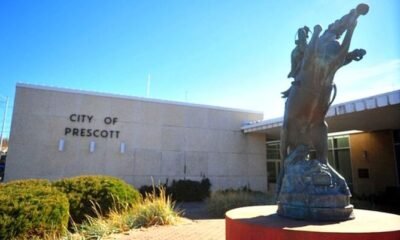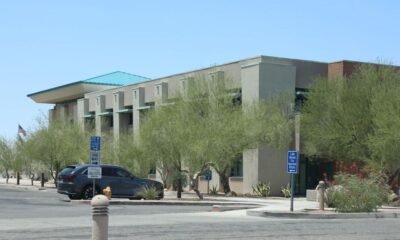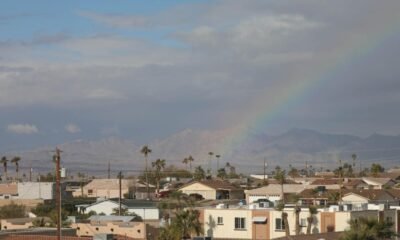annexation
Council Greenlights Annexation with 6-1 Vote

On December 10, during a Sedona City Council meeting, Councilman Pete Furman expressed reluctance to label the upcoming annexation as “sprawl,” yet ultimately used the term while discussing plans to annex 3,422 acres of Coconino National Forest land located to the west of Sedona.
If approved, this annexation would result in a 29% increase in the city’s area.
City Attorney Kurt Christianson clarified that the annexation would extend Sedona’s western boundary roughly three-and-a-half miles westward and about three and a quarter miles south. The area is largely comprised of Coconino National Forest, an Arizona Department of Transportation right-of-way, and the city’s Wastewater Reclamation Plant, as well as undeveloped lands known locally as “the Dells.” Due to state laws prohibiting the annexation of islands, this L-shaped area was designed to link desired parcels to existing city boundaries.
Christianson noted that no other properties are currently up for annexation, although the proposal touches the boundary of the Sedona Shadows development. “No one in Sedona Shadows or Sedona Pines or El Rojo Grande Ranch is included in this proposal,” he stated.
Councilman Brian Fultz emphasized that this action merely aims to incorporate city-owned property into the municipal limits. Christianson pointed out that development is not an option because the city does not own the land; the move primarily serves logistical purposes for accessing the wastewater treatment facility.
“We’ve discussed the ‘what’ and ‘how,’ but not the ‘why,’” Furman remarked, expressing confusion about the motivations behind the annexation. Christianson elaborated that one key reason is to signal to neighboring municipalities that Sedona desires to maintain control over this area, preventing encroachment. Another reason involves facilitating the proposed transit and maintenance facility, which remains unapproved.
Outgoing City Transit Administrator Robert Weber has cast doubt on the longevity of the city’s transit program, referring to it as experimental and potentially subject to closure due to lack of demand. City Manager Anette Spickard withheld speculation about future steps the city would take in the event of land annexation yet the transit program’s shutdown.
Furman raised concerns about potential complicating factors introduced by the county regarding operations at the city’s water treatment plant. Christianson confirmed that there had been tensions with county officials over the annexation, creating complications in their discussions.
Public Comment
Residents of Sunset Hills voiced discontent during the public comment session. Trish Janke questioned the urgency of the annexation, stating, “It’s been working fine the way it is; why suddenly is there a need for a change?” Bonnie Johnson added concerns regarding vagueness about the future, asking for assurances against any development in the area.
Development
Christianson reiterated that development of Coconino National Forest is not permitted. He explained that any potential development would necessitate a land exchange, a process that typically involves approval from Congress and is rare. Instances of successful land exchanges have been few, with notable examples including a cultural park initiative in 1998 and a recent trade with the Yavapai-Apache Nation.
Furman questioned the necessity of the annexation effort, warning that increased city size could significantly affect future budgets. Despite this, Vice Mayor Holli Ploog maintained that control over the land benefits the city, while Councilwomen Melissa Dunn and Kathy Kinsella expressed the need for local jurisdiction over zoning, particularly concerning future land exchanges with the U.S. Forest Service.
Furman, Kinsella, and Mayor Scott Jablow all dismissed the notion of immediate development of the Dells property, regardless of the annexation outcome. Kinsella emphasized the importance of preserving the Dells as pristine land, located in proximity to vital water resources.
As of now, the Dells is mainly utilized for effluent spraying from the sewage treatment process and cattle grazing. The council ultimately voted 6-1 in favor of advancing the annexation process, with Furman dissenting. A public hearing regarding the proposed annexation is slated for January 14, at which point the council can halt the procedure if deemed necessary.

















